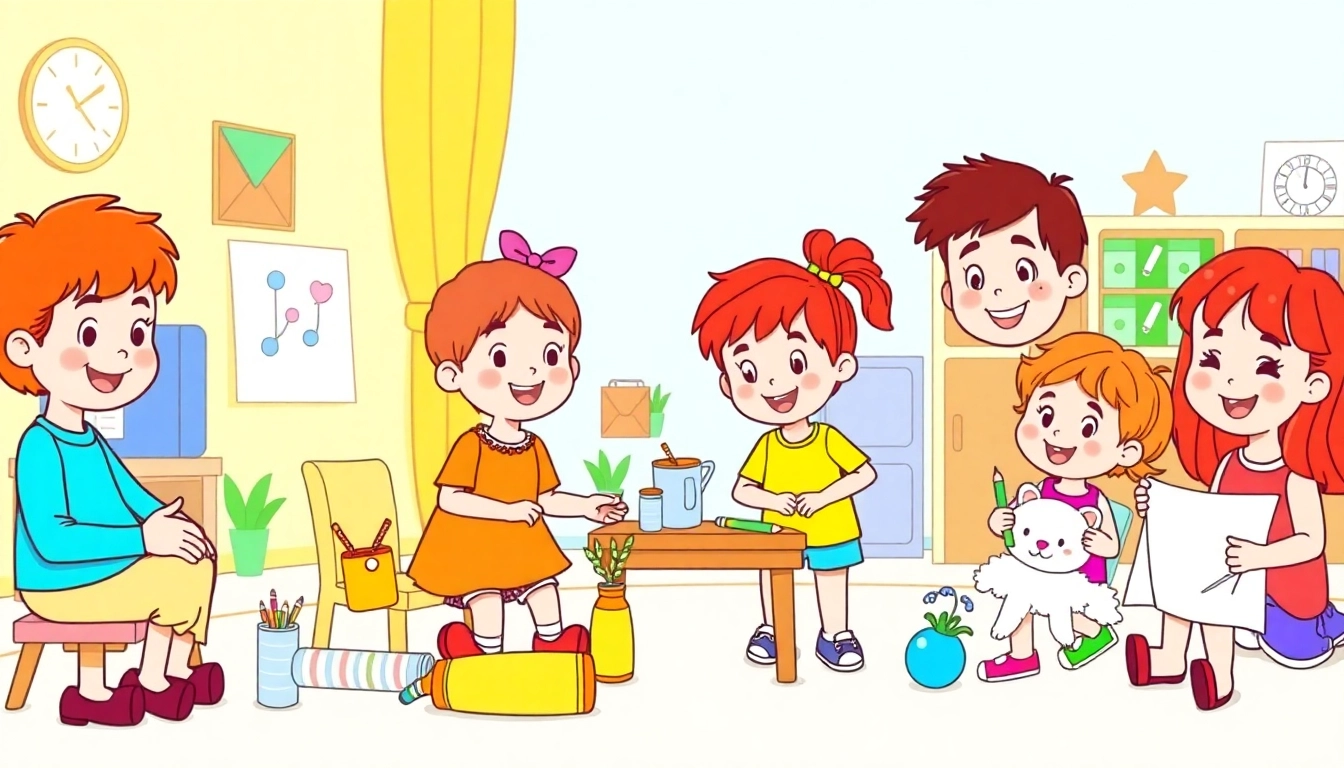Understanding the Audience and Their Coloring Needs
Creating engaging and effective coloring pages printables begins with a deep understanding of the target audience. Different age groups have distinct preferences, developmental needs, and aesthetic tastes that influence the design and complexity of printable coloring pages. For example, young children (preschool and early elementary) typically prefer simple, bold outlines with familiar themes such as animals, cartoon characters, and basic patterns that foster early motor skills and recognition. Conversely, teenagers and adult colorers often seek intricate, detailed designs that provide relaxation, mindfulness, and a canvas for artistic expression.
Furthermore, understanding the motivations behind coloring activities helps tailor content. Kids may view coloring primarily as play and learning, while adults may seek stress relief, creative outlet, or decorative art. Recognizing these nuanced needs enables content creators to develop printables that resonate deeply with each segment, increasing user engagement and satisfaction.
To effectively identify audience preferences, consider surveys, feedback forms, and user analytics from your platform. Analyzing popular themes, styles, and difficulty levels through data-driven insights ensures the coloring pages generated meet real demand. Exploring established platforms like Coloring Pages Printables reveals trends in what types of designs garner the most downloads and positive reviews, serving as valuable benchmarks for your offerings.
Different Age Groups and Their Preferences
Age-specific preferences significantly influence the design approach for coloring pages printables:
- Preschool (ages 2-5): Focus on large, simple outlines with familiar objects like animals, fruits, and basic shapes. Use bold lines to assist young children with fine motor control and introduce elements that support learning, such as numbers or letters integrated into the design.
- Elementary (ages 6-10): Incorporate more detail, themed scenes (fantasy, nature, vehicles), and patterns that challenge their growing skills while still being accessible. These pages can also include educational content, like alphabet tracing or simple puzzles.
- Tweens and Teens (ages 11-17): Offer intricate designs, geometric patterns, mandalas, and pop culture themes. These audiences seek complex, engaging art that provides a relaxing escape and creative challenge.
- Adults: Focus on adult coloring trends such as Zentangle, floral patterns, cityscapes, and abstract designs. Emphasize mindfulness, relaxation, and artistic expression by creating sophisticated motifs that appeal to aesthetic sensibilities.
Popular Themes and Styles for Printables
Identifying current trends in themes and styles is crucial for appealing to broad audiences. Popular themes include seasonal motifs (e.g., Christmas, Halloween, spring flowers), animals, fantasy characters, fashion, and motivational quotes integrated into design. Styles vary from minimalist line art to highly detailed illustrations, enabling you to cater to different skill levels and preferences.
Specialized themes such as mindfulness (mandalas, zen doodles), educational content (alphabet, numbers, science), or cultural motifs (e.g., tribal patterns, traditional art) broaden your reach. Additionally, niche themes like anime, comic book art, or vintage illustrations serve enthusiasts seeking personalized, themed content. Staying updated through social media, trend reports, and customer feedback helps refine theme selection and refresh your printable library continuously.
Addressing Beginner to Advanced Colorers
Designing for a spectrum of skill levels involves creating a balanced library of printables. For beginners, emphasize large, simple shapes with minimal detail, making coloring accessible and stress-free. Use clear, thick outlines and avoid crowded designs that can overwhelm novice colorers.
Intermediate users appreciate a moderate level of complexity, including multiple elements, shading opportunities, and varied motifs that challenge their skills progressively. For advanced colorers, produce highly detailed, intricate illustrations that require precision, patience, and artistic finesse.
To accommodate this diverse audience, consider offering tiered collections or color-by-number options for beginners, and downloadable digital kits with layered details for advanced users. Providing detailed instructions or coloring tips can further enhance user experience across skill levels.
Design Principles for Effective Coloring Pages Printables
Simplicity and Clarity in Line Art
Simplicity is fundamental for effective coloring pages, particularly for younger audiences. Clear, bold lines prevent confusion and help colorers stay within boundaries, fostering confidence and reducing frustration. Design with consistent line weight and avoid unnecessary overlapping elements that can complicate coloring efforts.
Utilizing vector-based design tools ensures crispness at all sizes, making the printables versatile across devices. Edges should be sharp, and designs should avoid excessive shading or intricate interior details that detract from the core line art, especially for beginners.
Incorporating Diverse Themes and Motifs
Diversity in themes maintains user interest and appeals to varied preferences. Incorporate a broad spectrum of motifs—nature scenes, animals, cultural symbols, abstract patterns, cartoon characters, and more—to ensure there’s content for everyone. Including culturally inclusive motifs fosters representation and broadens your audience.
Design motifs that can be combined or customized, such as modular patterns or interchangeable scenes, to encourage creativity and repeated engagement. Dynamic, themed collections elevate your brand as a versatile resource for all age groups and interests.
Balancing Detail and Space for Coloring
Achieving the right balance between detail and open space is essential. Highly detailed pages challenge advanced users and provide a sophisticated aesthetic, but may overwhelm beginners. Conversely, pages with ample open space invite experimentation and are more accessible.
Designers should consider including a mix of both styles within their collections. Use negative space intentionally to guide coloring flow, and consider the purpose of each printable—whether for quick fun or prolonged artistic activity. Offering printable variants with different complexity levels caters to varied user needs and increases overall accessibility.
Technical Tips for Creating Printable Files
Choosing the Right Formats and Resolutions
High-quality printables rely on appropriate digital formats. The most common and versatile format is PDF, which maintains layout fidelity across devices and operating systems. For designers creating original artwork, vector formats (such as SVG or AI files) enable scalable, crisp lines without loss of quality.
Resolution is equally critical. For raster images, a minimum of 300 DPI (dots per inch) ensures clarity and sharpness in print. Optimize files to balance quality and file size, making downloads fast while preserving detail.
Designing for Easy Printing on Standard Devices
Design printables that are compatible with home printers involves adhering to standard paper sizes (most commonly US Letter or A4). Include crop marks and margins to facilitate trimming, and avoid overly narrow or crowded designs that may be cut off during printing.
Provide clear instructions for users on settings—such as selecting ‘Best Quality’ print mode—and include advice on color settings. Offering print-ready PDFs with bleed margins for full-bleed designs can enhance presentation quality and user satisfaction.
Ensuring Accessibility and Usability
Accessibility features expand the reach of your printables. Use high-contrast lines and avoid intricate patterns that can be difficult for visually impaired users. Consider providing alternative versions, such as outlines with thicker lines or grayscale images, to accommodate diverse needs.
Additionally, ensure digital files are compatible with various devices and printing software, and include simple, step-by-step guides for first-time users. User-friendly design promotes positive experiences and repeat downloads.
Optimizing Content for SEO and Engagement
Using Keyword-Rich Titles and Descriptions
Effective SEO begins with the strategic use of keywords. Incorporate primary keywords such as “Coloring Pages Printables” naturally into page titles, descriptions, and alt texts. For example, a description like “Discover a wide selection of free Coloring Pages Printables suitable for all ages and skill levels” enhances searchability.
Use long-tail keywords, including specific themes or age groups, to attract targeted traffic. For instance, “Printable Coloring Pages for Kids PDF” or “Intricate Adult Coloring Pages” help capture niche audiences actively seeking such content.
Implementing Effective Metadata and Tags
Proper metadata includes descriptive titles, meta descriptions, and keyword tags that improve search engine ranking and visibility. Use keywords identified during research and ensure they accurately reflect the content of each printable.
Structured data markup can further enhance search appearance, enabling rich snippets such as star ratings and download counts, which attract clicks and boost engagement.
Strategies for Increasing Social Sharing and Backlinks
Encourage sharing by integrating social sharing buttons within download pages and offering shareable previews. Engaging content like themed collections or seasonal calendars incentivize users to recommend your printables.
Develop partnerships with educational platforms, parenting blogs, and art communities to generate backlinks, increasing your site’s authority. Publishing guest posts, collaborating on themed projects, or hosting design contests can amplify exposure and drive traffic back to your platform.
Monetization and Brand Positioning Strategies
Offering Exclusive or Themed Printable Collections
Creating premium collections or subscription-based access to exclusive designs positions your brand as a high-value resource. Curate themed bundles like holiday sets, educational packs, or artistic collections to appeal to niche markets and convert visitors into paying members.
Implement tiered pricing models and provide free sample pages to build trust and demonstrate quality, encouraging upgrades to paid packages.
Partnering with Educational and Recreational Platforms
Collaborations with schools, daycare centers, libraries, and recreational organizations extend your reach and add credibility. Offer tailored resources, co-branded campaigns, or branded events that integrate your printables into their programs.
Affiliate marketing and revenue-sharing models with partners can generate income streams while broadening visibility.
Creating a Community for Ongoing Feedback and Growth
Building an active community through social media, forums, and user galleries encourages ongoing engagement and valuable feedback. Feature user artwork, run contests, and solicit suggestions for new themes. Such efforts foster loyalty, increase repeated use, and provide insights to refine your offerings.
Investing in customer support and regularly updating content based on trends and feedback solidifies your reputation as a trusted resource in the coloring pages space.










